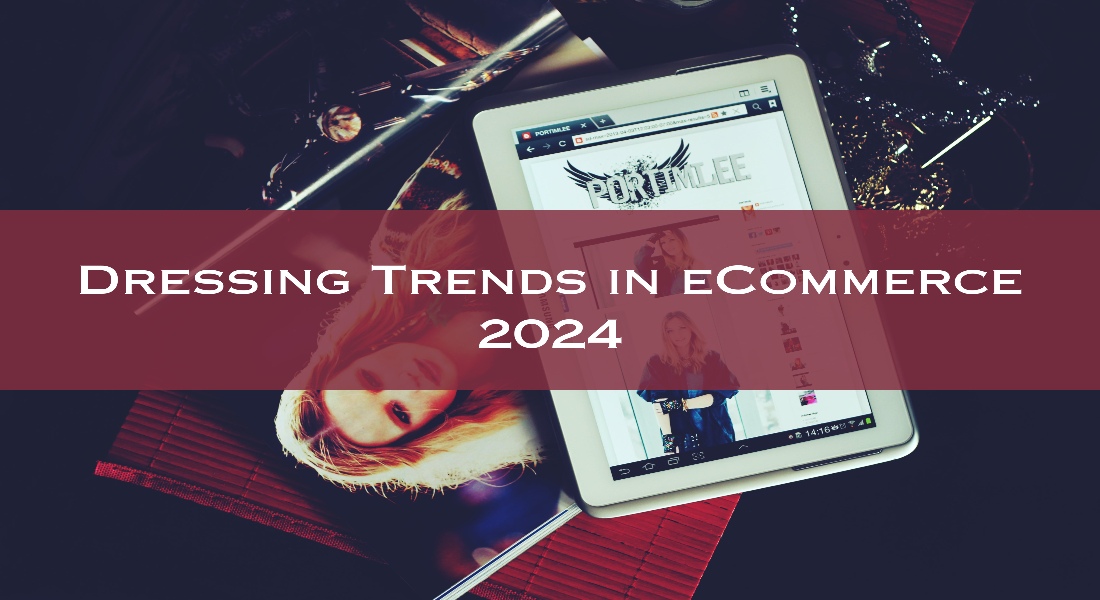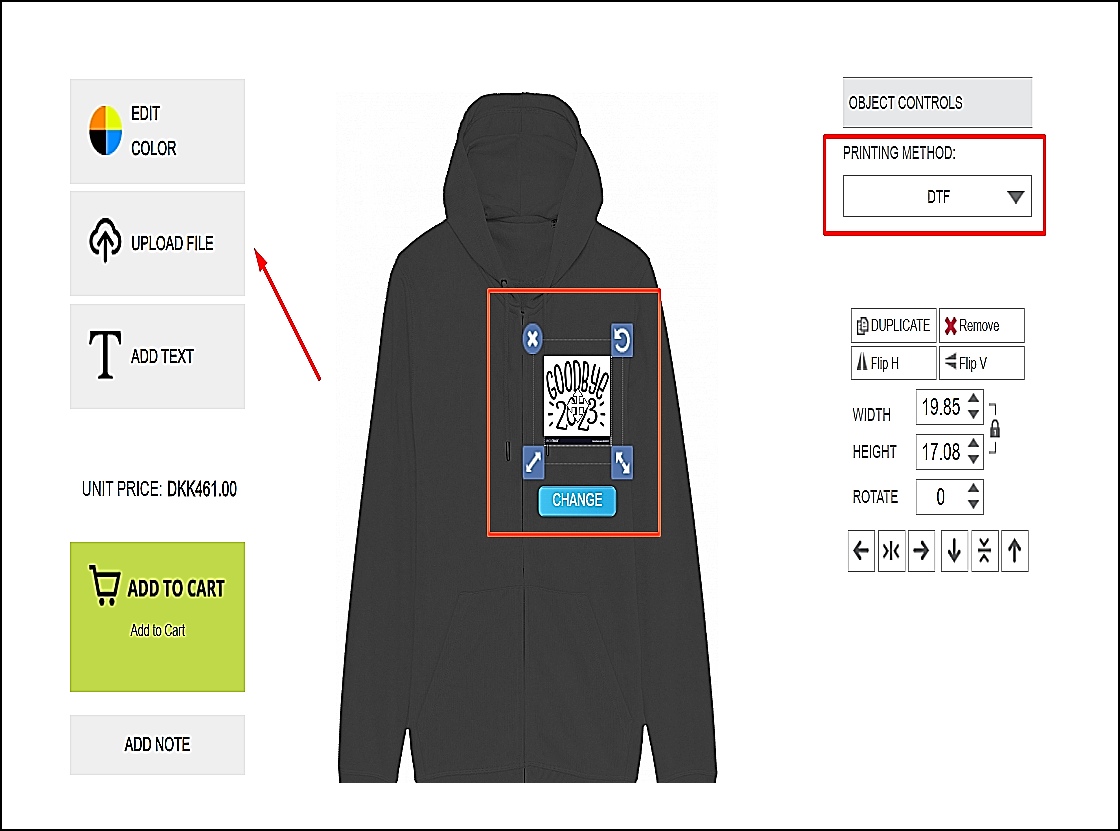
Statista said that in 2023, about one-fifth of all businesses on the internet will be part of the fashion industry.
Technology helps make world connections quicker, and online buying keeps increasing across different businesses. But, fashion has shown to be very helpful for online shopping. More people want unique things and other things, making them ask for many choices online shops can offer.
The clothes business changes quickly, making it very tough to compete. Brands must continuously develop new sets of things and shopping moments that match changing people’s likes. Now, social media is a big part too. Platforms like Instagram and TikTok are becoming places to show new fashion styles for the first time.
Because the online clothing business is getting faster, 2024 looks like a big year. Fashion shows in big style cities like New York, Paris and Milan will show the newest styles. At the same time, shopping holidays like Black Friday, Cyber Monday and Singles Day are expected to set new records for online buying.
As more people shop for clothes online, companies making and selling these products will keep trying new ways to make digital buying easier.
This article will discuss decoding the dressing trends in eCommerce 2024.
Factors of Dressing Trends in eCommerce
Factor 1 – Prioritize Highly Personalized Shopping Experiences
In 2024, customization will be more successful. Brands will use AI and ML to buy things online or in the store. They will work harder to give personal shopping experiences to customers.
A study by Deloitte shows personalized ads are liked by 90% of people, and it also found out that the exact percentage is more likely to buy from a company that provides individual experiences.
Beyond small details like a customer’s name or shopping history, super-personalization aims to make every contact with the brand special. We will learn and guess what is needed. Having lots of data will help make personalization very, very strong.
Businesses will use intelligent AI to study social media actions, interests, lifestyle picks, and past buys. They do this all together so they can create complete customer profiles.
For instance, a big problem with buying things online is when people leave their shopping carts without finishing the purchase. Super-personalization could help by sending notifications or emails regarding cart abandonment, or this email can also contain suggestions for special deals.
Brands will use rewards programs to give special discounts and gifts. This helps strengthen the bond between stores and their customers.
In 2024, most buyers will want an extraordinary shopping experience, whether online or in-store. As a result, using a product personalizer at your store could be an intelligent approach. Let me show you how a product personalizer works-

Here, a store owner is using a personalized product and no doubt, it is an intelligent approach because, in 2024, this trend of using customized products will be more popular.
Factor 2 – Sustainability is Going to Get More Attention
In 2024, eco-friendly clothing will keep changing. People are getting more interested in being open about things, so laws worldwide make big fashion companies accountable for their effect on nature and people. This is changing how vital the clothes business is to us all.
This change isn’t just short-lived; it is an intense action that will increase power in the next few years. The main goal for companies will be on the 7Rs: Cut down, Use again and more. They want to promote good ways of buying things and making them with less waste.
There has been a rise in wanting clothes that are good for the earth, choosing to rent them instead of buying and making old stuff new again. This includes fashion from older times. A future trends company WGSN report points out significant events between 2024 and 25. These include using low-damage circular synthetic fillers, guaranteed ethically sourced down and feathers, replacements for animal wool and plant-based fiber insulations instead of using animals.
Rental choices are snowballing, too, as people become more aware of their decisions. There has been a lot of growth, especially during weddings or holidays. Significant technological changes and the development of online shopping have made rentals very easy to get.
With lots of raw materials around, there are also great chances for upcycling to grow in the next five years. Companies such as Doodlage, RaasLeela, The Second Life and Patch over Patch are at the forefront of this fashion trend. Upcycling isn’t just a fad; the EU approves it as one of the best and cheapest ways for businesses to make good clothing for our planet.
Inventions like 3D knitting machines that reduce fabric waste and blockchain tech for a transparent supply chain will be used often.
In 2024, there will be more focus on checking greenwashing. Greenwashing is when companies wrongly say they are suitable for the environment or help save it. A new European Commission report found that about 39% of sustainability claims in textile, clothing and shoe businesses might be untrue or misleading.
Looking into the future of fashion, one thing is sure – in 2024, sustainability will continue to be a big part of the world’s style change.
Factor 3 – The Colour Trends Will be a Big Part of The Fashion Industry
The big thing in the clothing business for 2024 will be lots of solid and scary colors. Colors like bright pink, yellow and dark green will likely stay popular with people who care about fashion. Also, wearing one intense color all over your clothes will likely become more popular. Choosing a fresh and simple look is still liked by many.
In fashion, color is more than just a look-good thing. It can tell how we feel and create moods, too. That’s why it plays such an essential part in this industry.
For 2024, Pantone picked ‘Peach Fuzz’ as the year’s color. It says it is a gentle and light peach shade. This pick is not only about looks. Pantone picks the color because of its ‘all-welcoming feeling that makes mind, body and heart feel fuller’. ‘Peach Fuzz’, a color that shows ‘genuine kindness’. It recognizes the common problems and struggles in many people’s lives.
The peach color is used for clothes and fashion items because it sends a sensory message. It pairs well with suede, velvet, quilted fabrics and fur since the shade can be ‘sincerely comforting to touch’.
‘Peach Fuzz’ makes us feel cozy and want to share love. It tries to give a gentle feeling with messages about caring and working together in groups for community support.
When discussing colors, it’s important to say how pink has changed fashion. So, listen carefully to everyone who loves fashion, owns a business and is passionate about it!
Who would have thought about the worldwide pink craze after they officially released Barbie’s film in July 2023? It looks like pink has returned strongly – or maybe it never disappeared.
Pink shoes, bags, swimsuits and umbrellas have taken over the world. People wore cute pink clothes to watch the movie. Next year will be full of different shades of this bright color.
The Barbie trend has not only done well but has exceeded what is expected in the fashion world. Barbie’s enormous marketing budget has allowed the famous brand to make nice team-ups with other fields. More than six months after the movie, people still like pink a lot, and it’s not getting any less popular!
Factor 4- AI-Powered Personalization Will Get Priority
We all know that making shopping more personal makes it better. We also know that artificial intelligence (AI) and machine learning are changing how things work in almost every industry.
So it’s only standard to see these two ideas come together.
According to AI Business, by 2025, AI will influence 95% of customer interactions.
According to recent dressing trends in eCommerce shopping, artificial intelligence is assisting firms in discovering the “sweet spot” of personalization. Too much merchandise might put off potential internet shoppers. People hate and have a hard time with experiences that lack personal touch.
Artificial intelligence (AI) aids in achieving equilibrium by searching for the optimal actions at the optimal times using nearly infinite data points. AI is improving the fashion retail market. It facilitates marketing and customer service by suggesting products, adjusting prices, and making life easier for everyone concerned.
Factor 5- Fashion Businesses are getting into a bit more Social Media
We spend about 2.5 hours daily on social media, which keeps rising yearly. That’s why intelligent online fashion shops (and other businesses) use this chance to sell more things.
According to Statista, the US social commerce market hit about $992 billion in 2020 and is expected to reach a massive $2.7 trillion by 2036.
Online fashion retailers utilize diverse digital strategies to engage with this expanding market. One common approach is shoppable videos that drive seamless in-app purchases through embedded links on product tags.
Social media and influencer marketing also play significant roles, with brands collaborating with famous personalities who promote items to their audiences, often through affiliate programs. Retailers also pursue omnichannel integration, blending offline and e-commerce channels for a unified brand experience. Read this to learn more about social media marketing for eCommerce.
Many leverage built-in shopping features on social platforms like shop tabs on Instagram and Facebook or Pinterest’s shopping pins that enable direct checkout.
As the fashion eCommerce landscape evolves, expect continued creative innovations that intertwine entertainment, community and commerce while keeping convenience at the core. Technologies like livestream selling, augmented reality virtual fitting rooms and one-click ordering through sites like Shopify will likely rise in popularity as retailers of all ages.
Factor 6- The Resell Market Of Clothing Will Boom
Another way to help sustainability is people’s increasing choice of buying used clothes instead of new ones. This has a twofold benefit: It helps lessen garbage while decreasing the need to make new things. This often leads to harmful effects on climate change and other possible social problems.
A recent report says the online clothing second-hand sale market is expected to reach $38 billion by 2027.
This is almost twice its value in 2023. This forecast means the online selling market will grow almost twice as fast as its parent clothing market.
Many people will look for a used object before they buy it new. However, the resale concept doesn’t apply only to buying: Studies show that young shoppers are starting to think about how much money they can get back when selling clothes, and these consumers spend less if the value is not good. This proves that they are active members in buying and selling used items.
Bottom Line
Understanding 2024 eCommerce dressing trends involves these essential drivers. Fashion brands may succeed in this changing digital market by innovating. Always remember that it’s about providing compelling experiences that meet the evolving needs of a connected and trend-conscious online audience, not just selling things.


